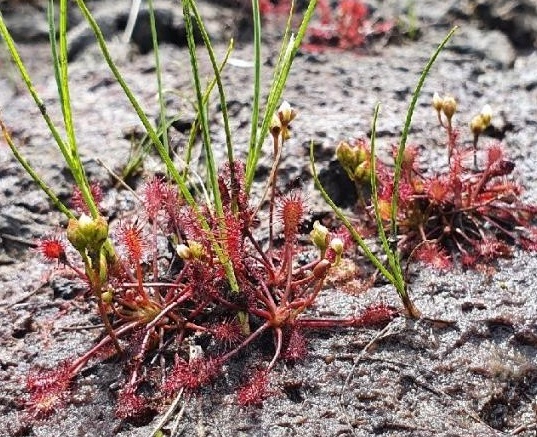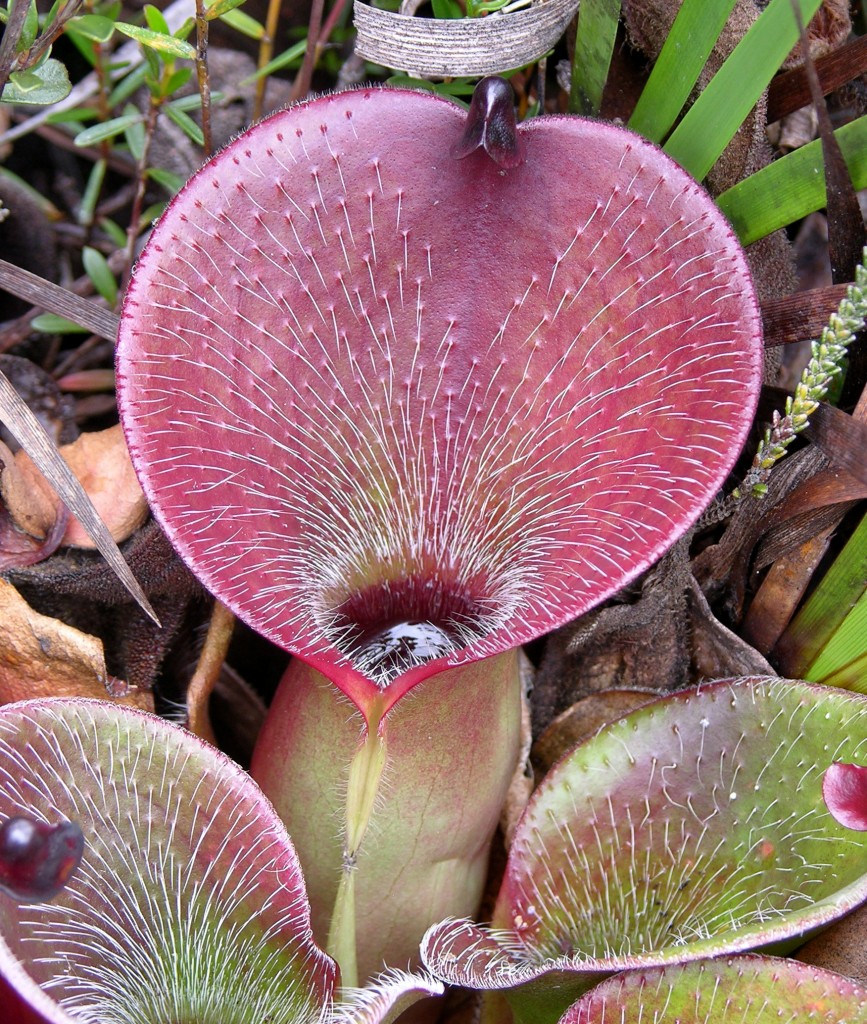During 1838 and 1839, the celebrated German cartographer Robert Schomburgk was dispatched by the British Government to travel to the remote interior of the colony of British Guyana (now Guyana) to map the remote borders of the province and to survey the topography and geology of the territory. During the early 19th century, the colonial government’s understanding of the interior of British Guyana was imprecise. Several explorers had traveled through the area during the previous three centuries and returned with reports of a mysterious country dominated by towering mountains and pinnacles but the information that existed was vague and often difficult to believe. In 1595 Sir Walter Raleigh had reported an immense spire that resembled a ‘white church tower’ and in 1780 Capuchin Mariano (a Spanish missionary) described looming mountains that resembled ‘enormous towers and castles’.
For seven months, Schomburgk journeyed through the jungles and savannahs of British Guyana towards the remote heart of the Guyana Highlands. From afar, he beheld Mount Roraima an immense vertical sided plateaus on the border of what is now Venezuela, Guyana and Brazil. In his journal he recorded
I remained amazed looking at the gigantic thick wall and dominated by a sensation of almost grievous oppression… looking at this giddy height, the rocky mass seemed savage and tremendous.
Intrigued, Schomburgk traveled closer towards the great Mountain and eventually approached the base of the gigantic plateau where, in the shadow of the mountain’s cliff sides, he discovered a vast marshy swamp that was home to a multitude of new plant and animal species. So bewildered by the richness of new species, he named the swamp a ‘botanical El Dorado’ and amidst the wealth of new species, he discovered a pitcher plant – the first to be recorded in South America.
In his 1840 work ‘Journey from Fort San Joaquim, on the Rio Branco, and Thence to Roraima, Schomburk records the pitcher plant with fascination:
Another plant of great interest, the Heliamphora nutans, resembles the pitcher plant, which are similar to those of Sarracenia variolaris; (now named S. minor) but there was a great deviation in the flower; as in the present genus there are several flowers, and the seed are winge.
During the 150 years since Robert Schomburgk traveled to Mount Roraima explorers and travelers have discovered over one hundred similar table mountains distributed across Southern Venezuela, Guyana and northern Brazil. On their summits, a further 14 species of Heliamphora have been discovered (H. chimantensis, H. elongata, H. exappendiculata, H. folliculata, H. glabra, H. heterodoxa, H. hispida, H. ionasii, H. macdonaldae, H. minor, H. neblinae, H. pulchella, H. sarracenioides and H. tatei). Indeed it is now clear that Heliamphora is the largest genus of all the New World pitcher plants and also that it encompasses some of the largest, most spectacular and most colourful of all carnivorous plants.
Yet despite the remarkable nature of Heliamphora, the genus has remained relatively obscure in botanical and horticultural circles – especially in comparison to other genera of carnivorous plants. Even today, only a few species are cultivated widely and our understanding of the systematics and taxonomy of the group has remained unclear until very recently – several species have been repeatedly mis-identified in the field and erroneously reduced or incorrectly merged with other taxa by taxonomists. In particular, much confusion remains over the H. neblinae, H. macdonaldae and H. tatei group.
One of the reasons that explains the obscurity of Heliamphora is the inherent remoteness and inaccessibility of the areas where they naturally occur. The majority of Heliamphora sp. are found exclusively on the summits or flanks of the ‘Tepuis’ – the tablelands of the Guiana Highlands (Venezuela, Guyana and northern Brazil) and in many cases, often on just one or two individual mountains. Since the majority of the Tepuis rise hundreds of meters above the surrounding lowlands of Guiana and are surrounded on all sides by vertical cliffs, most are accessible only by helicopter and are visited only very occasionally by researchers and surveyors.
It is however the very ecological isolation of the Tepuis that has driven the astounding diversity of the Heliamphora. The Tepuis represent climatically similar yet locally isolated habitats and consequently the biogeography of the Guiana Highlands is akin to that of ocean archipelagos. The fragmentation of plant and animal populations on separate mountain ‘islands’ has encouraged rapid evolution driving species to better suite slight climatic and ecological differences and so each species has specialized and diversified. Much like Darwin’s Finches or the Galapagos Tortoises, the genus Heliamphora has evolved to contain a broad spectrum of species each of which varies in terms of shape, size and colour to suite a specific ecological niche within its habitat.
H. ionasii for example grows exclusively amidst dense vegetation and so produces large, 30 – 45 cm tall, infundibular leaves to avoid being overshadowed and displaced. Since it depends upon attracting insects as a source of nutrients, it produces conspicuous red and orange leaves that contrast conspicuously with surrounding vegetation and invite the attention of potential prey. Since it occurs exclusively within the cloud forest on the flanks of the Ilu-Tramen Massif, it generally traps larger insects than species on the barren plateau summits and as a consequence, it has evolved extremely prominent downwards pointing hairs which help to retain trapped prey.
In contrast, H. minor has specialized in the opposite evolutionary direction and grows mainly in inhospitable and extremely barren areas largely devoid of tall vegetation. It has adapted by reducing the size of its leaves and so shelters amidst cracks and depressions in the surface of the rock and amidst other plants where exposure to wind and fluctuations of temperature are reduced. Since it often catches only small insect prey, it does not require long downwards pointing hairs on the interior surface of its leaves and instead possesses only very small hairs.
H. pulchella however frequently occurs in very wet, vegetated habitat and has adapted to its environment by lacking a drainage hole mid way up its leaf (which most other Heliamphora sp. possess). Consequently it can grow in deep water and not loose nutrients from trapped prey contained within its leaves.
The remarkable adaptability within the genus has enabled Heliamphora to diverge into an extremely successful group of plants – the combination of the very specific adaptations of each species as well as the inherent ability to access nutrients unavailable to regular non-carnivorous plants, allows Heliamphora to perfectly occupy ecological niches within the Tepui summit environment. Consequently Heliamphora often are among the most frequently occurring plants on the Tepui summits and paradoxically they often occur most frequently in the most barren and inhospitable habitats where few other plant species are able to survive or compete.
The adaptations of Heliamphora as pitcher plants are indeed so successful that they have evolved in parallel in representatives of at least two other plant genera – Brocchinia and Catopsis – the bromeliad pitcher plants. In these two genera it is the entire leaf rosette which collectively forms a ‘pitcher’ vessel that contains water and traps insect prey – but the carnivorous mechanism which these plants relies in essence on exactly the same morphological structure and pitfall process which typify the carnivorous nature of Heliamphora. Even though the diversity of carnivorous species in both genera is relatively restricted, the bromeliad pitcher plants are nevertheless extremely successful and rival the Heliamphora for the amount of prey that is caught.
Stewart McPherson’s two new books Pitcher Plants of the Americas and Lost Worlds examine the diversity of the Heliamphora and the Tepuis in detail – please see a detailed overview and sample images at www.redfernnaturalhistory.com.
Stewart McPherson’s new book Pitcher Plants of the Americas examines the wild ecology and remarkable diversity of all known species of the Heliamphora. Stewart is selling copies personally through his online company www.redfernnaturalhistory.com to raise money for the Meadowview Biological Station – with the goal of donating 5 to 10 acres of Sarracenia habitat for permanent protection – please see www.redfernnaturalhistory.com/conservation.htm.
Bibliography
Schomburgk, R. H. 1840, „Journey from Fort San Joaquim, on the Rio Branco, to Roraima, and Thence by the Rivers Parima and Merewari to Esmeralda, on the Orinoco, in 1838-9” Journal of the Royal Geographical Society 10: 191-247.
Stewart McPherson, 2007












